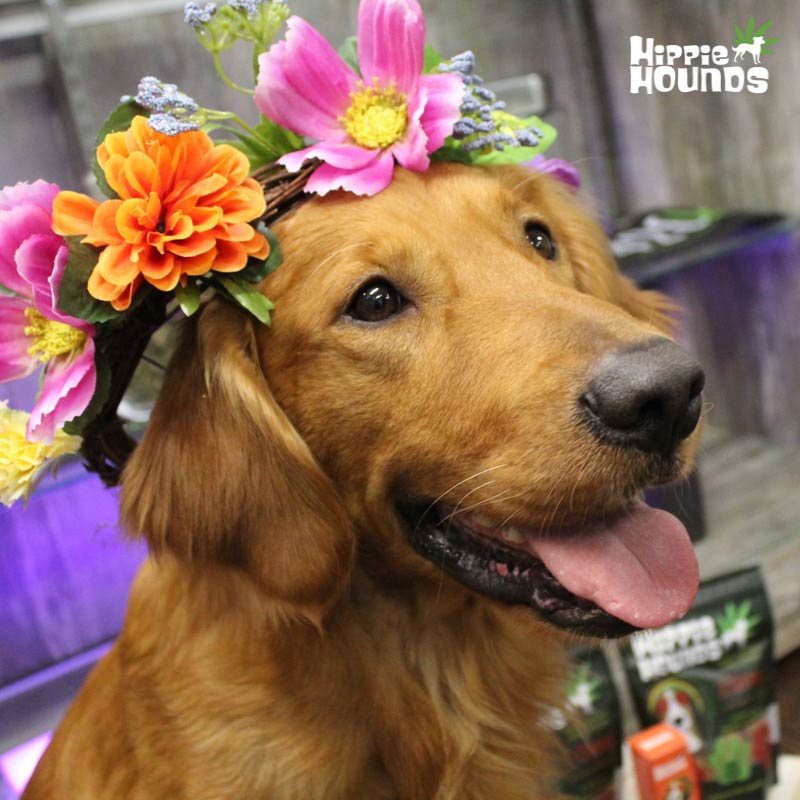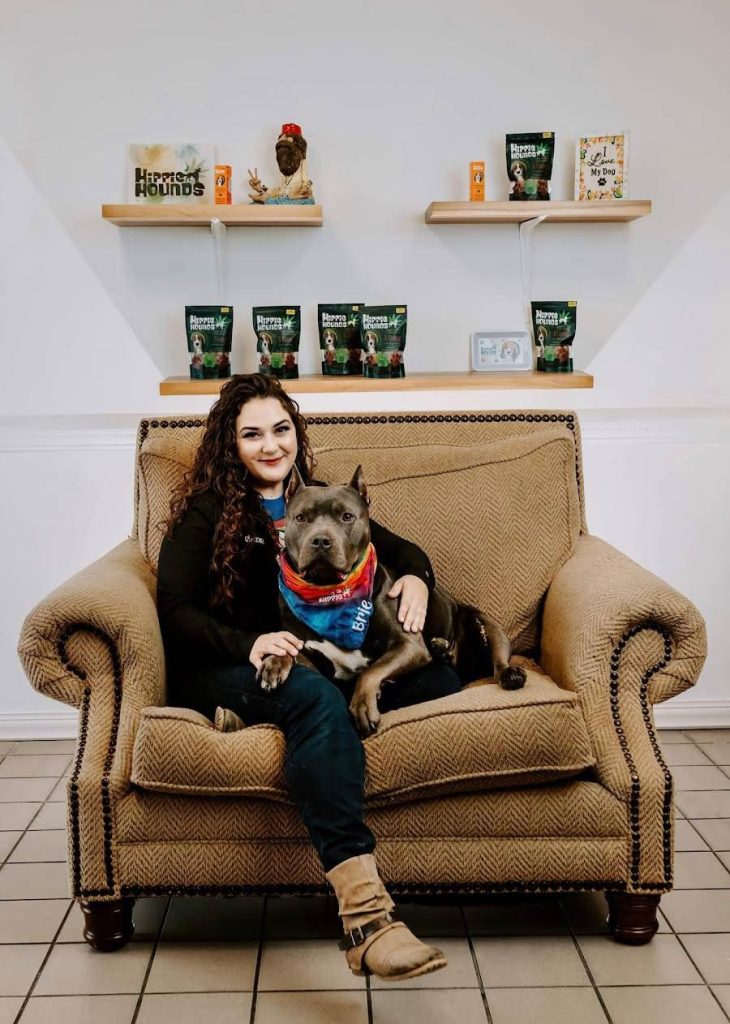Art By Melanie Rizzo
“You’re gonna put cannabis in dog treats? How on earth is that going to work?” Dr. Rodgers asked me.
I ran my finger across the pulsing Cephalic vein of the dog sitting in front of me. Preparing to draw blood on our patient as the vet studied the radiographs behind me.
“Yeah, I mean obviously it won’t be high in THC, but I know there has to be medicinal properties for dogs as well.” I retorted as I pulled back on the plunger and the 3ml syringe began to fill with blood.
 I never thought that I would go from those conversations to stopping by clinics that carry my full-spectrum hemp dog treats. I can’t help but think back as I hear story after story about cannabis helping canines.
I never thought that I would go from those conversations to stopping by clinics that carry my full-spectrum hemp dog treats. I can’t help but think back as I hear story after story about cannabis helping canines.
The canine endocannabinoid system looks a lot like ours. Their receptors are more sensitive to the effects of phytocannabinoids, especially to THC. In fact, a THC-intoxicated canine is a common sight in the vet clinic. When a dog is exposed to too much THC you’ll find them wobbling back and forth, potentially dribbling urine, having a dramatized response to stimuli, difficulty controlling body temp, and difficulty maintaining hydration.
We handle these cases the same way as many other substances (unless there’s chocolate involved, that’s a different story) we administer anti-nausea medication to help with the dizzy feeling, heat support, IV fluids to maintain hydration, and a quiet place to rest. Once the dogs have a bag of fluids they perk right up and go home with no medications.
I’ve dealt with a lot of things in vet med, but THC was the only intoxication that didn’t require forced emesis, activated charcoal, and prayer. That alone made me curious about what the plant could do for dogs. My research helped me understand that THC had a strong affinity to the CB1 receptors. The highest concentration of CB1 receptors in the canine brain is located in the cerebellum, the cerebellum is responsible for balance and that’s why we see the dogs sway back and forth when they’re intoxicated.
On the other side of that coin is therapeutic effect. While high doses of THC is overwhelming to the canine ECS, THC does have proven therapeutic effects when used in conjunction with other phytocannabinoids.
Why is that? It all shakes down to how the cannabinoid binds to the receptor.
For instance, THC binds orthosterically to the receptor. Think of orthosteric as the traditional binding site, THC fits into the CB1 receptor like a glove. CBD, on the other hand, binds allosterically to the receptors. Allosteric binding is anywhere else on the receptor except the traditional binding site. What’s interesting is that when the two major cannabinoids (CBD & THC) bind to the same receptor the CBD binding allosterically changes the orthosteric site and thus THC doesn’t fit as firmly in the receptor. This decreases the intoxication effects that the canine experiences from THC. Since all of the molecules have their own specific coding, when working together through the entourage effect, humans have an overall better experience. Well, your dog feels the same way!
 Much like our own system, your dog’s endocannabinoid system produces its own endocannabinoids. In fact, it’s more than just dogs. When birds sing, they produce copious amounts of AEA, also known as the “Bliss” molecule. Nematodes exhibit hedonic feeding- AKA “the munchies” when exposed to anandamide. We’ve found that even insects with exoskeletons have a modified version of an endocannabinoid system. We all have a system that interacts with the compounds found in cannabis, now it’s all about narrowing down what cannabinoids are beneficial to which ailments so we can tailor-make cannabis profiles for our furry, and not-so-furry friends.
Much like our own system, your dog’s endocannabinoid system produces its own endocannabinoids. In fact, it’s more than just dogs. When birds sing, they produce copious amounts of AEA, also known as the “Bliss” molecule. Nematodes exhibit hedonic feeding- AKA “the munchies” when exposed to anandamide. We’ve found that even insects with exoskeletons have a modified version of an endocannabinoid system. We all have a system that interacts with the compounds found in cannabis, now it’s all about narrowing down what cannabinoids are beneficial to which ailments so we can tailor-make cannabis profiles for our furry, and not-so-furry friends.
This is where my research comes into play; For years, I’ve been designing custom cannabinoid and terpenoid profiles for Hippie Hounds, so I’ve been able to see what cannabis can do. One case stands out, and her name is Aspen.
Aspen is an American Bully who was a year and a half old when I met her. She was diagnosed with heartworms and had to undergo treatment. The treatment consists of painful injections in the back muscle and mandatory cage rest. A dog that undergoes heartworm treatment without cage rest risks cardiopulmonary complications. We tried my full-spectrum Hemp blend for Aspen at first, but even 50mg didn’t make a dent in her energy levels. Cage rest for a dog that’s barely two is no cake walk. After talking to Aspen’s human-mom we decided to move forward with a 1:1 THC:CBD tincture. A 1:1 means for every CBD molecule there was also a THC molecule to match. We started with 20mg of combination medicine.
Within 20 minutes, Aspen was resting and relaxing. Her human-mom reported to me that for two months, Aspen would politely take her tincture in the morning and go straight to her kennel to relax. My formula made cage rest a breeze, and little Aspen made a full recovery from her heartworm diagnosis.
“I had to tell you a story about your treats! It’s insane what they did for this case.” Dr. Rodgers has a whimsical laugh to her voice.
It had been 4 years since the conversation we had about my idea to make cannabis dog treats.
“I can’t wait to hear it!” My grin was audible through the phone.
“We had a dog come in with a mass so large we couldn’t pass the endotracheal tube to intubate for surgery. I sent her home with your 1,000mg tincture. A month later she came back and the mass had shrunk down enough that we could pass the tube!”
If I’m watching cannabis stop seizures, shrink masses, decrease inflammation, soothe anxiety and more, it begs the question: What can cannabis really do for your canine?




